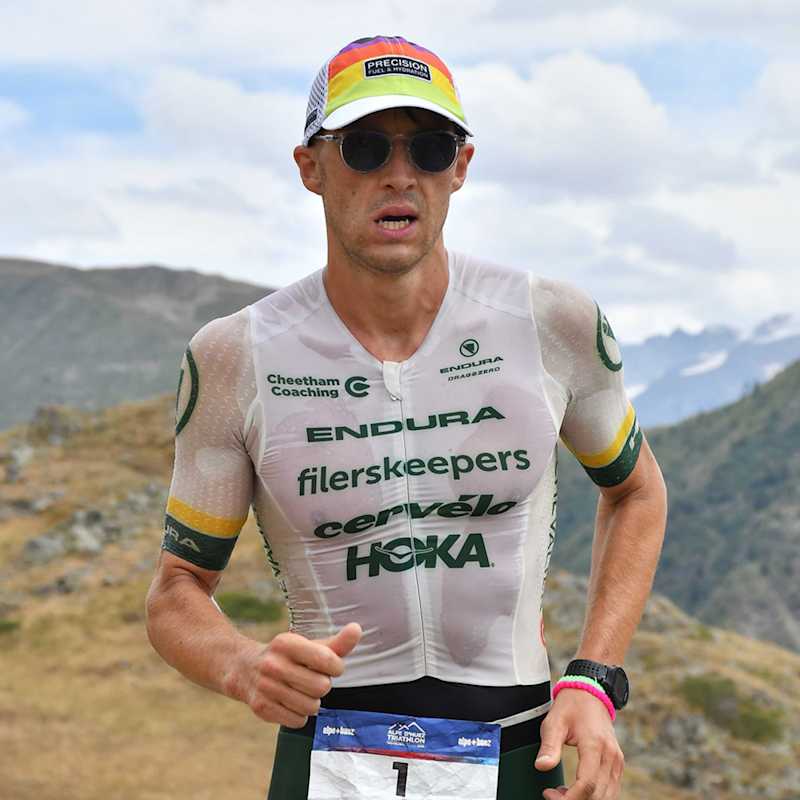
Leon Chevalier
Embrunman
Leon's headline numbers
Leon's strategy
Fueling
Carbohydrate is the main fuel you burn when racing. Failing to fuel properly is a leading cause of underperformance in longer races.
Leon was almost bang on the 90g/h recommendations, split into an impressive 110g/h on the bike and 62g/h during the run. His intake on the run leg may seem a little low, but he explained that he was listening to his body and chose not to take his last remaining gel.
Hydration
Taking on board an appropriate amount of fluid and sodium is essential to maintaining blood volume and supporting the cardiovascular effort needed to perform on race day.
Whilst the absolute amount of sodium and fluid consumed per hour is important, it’s critical to consider these in relation to each other. This is known as 'relative sodium concentration' and it’s expressed in milligrams per litre (mg/L). How much sodium you’re taking in per litre of fluid is more important than the absolute amount taken in per hour.
Sweat sodium concentration (mg/L) is largely genetically determined and remains relatively stable. Knowing how salty your sweat is enables you to replace a good proportion of your sweat losses, which can range from 200-2,000mg/L.
Given Leon’s losses are High (1,392mg/L), nailing his hydration strategy becomes especially crucial when it’s hot and/or humid.
Learn moreCompared to his last race, Leon increased the relative sodium concentration of his drinks by swapping PH 1000 (Drink Mix) for PH 1500 (Drink Mix). This would’ve helped him replace more of his net sodium losses, which increased with the high temperatures during this race. Although Leon consumed considerably less sodium on the run than he did on the bike, his intake of over one gram of sodium per hour on the bike would have helped ‘frontload’ his sodium intake and maintain his hydration status as his replacement dropped during the run.
Caffeine
Beyond the Three Levers of Performance (carb, sodium and fluid), caffeine is one of only a few substances that is proven to improve performance for most endurance athletes as it can help stave off mental and physical fatigue.
After reviewing our case studies, we saw that a caffeine gel was more popular than any other source of carbs to have within the final 30 minutes before a race start. Leon followed the trend here, and this would’ve helped by providing a reduced perception of effort and increased focus, especially as he topped up with more PF 30 Caffeine Gels during the race to hit the recommended dose.
How Leon hit his numbers
Here's everything that Leon ate and drank on the day...
Leon's weapons of choice
Final thoughts
Leon's full stats
Data Confidence?
There is good confidence in the accuracy of the data reported. An athlete feels that the numbers closely reflect what they consumed despite a couple of estimations which may carry some degree of error. The majority of what was consumed is recorded to a high level of specificity (most volumes are known through the use of bottles brands quantities flavours). The numbers are very plausible and align with previous data recordings (if an athlete has collected data previously).